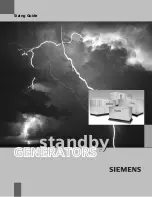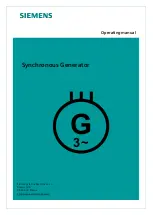
Bulletin TI-N2-1100K
Installation, Operation and Maintenance Manual
Quick Start Summary
Parker Balston Model HPN2-1100, UHPN2-1100
www.balstonlabgasgenerators.com
8
1-800-343-4048
To remove trace hydrocarbon contaminants from the inside surface of the downstream
(copper or stainless steel) tubing, the customer should clean the tubing prior to installa-
tion. First, connect the tubing to a supply of clean, inert gas (He or N
2
). Next, initiate the gas
flow through the tubing (5-10 cc/min.). Finally, heat the tubing with a propane torch, moving
the flame at a rate of approximately 1/2 in./sec. in the direction of flow. This procedure will
remove any trace waxes or oils used in the manufacture of the tubing.
Note:
The use of plastic piping components or any piping components which are not clean
will contaminate the nitrogen stream.
If an indicating oxygen trap (P/N 72092) will be used with the generator, install the trap as
close to the outlet port of the generator as possible. Install the trap in a vertical position to
prevent channeling within the trap.
Drain Line -
The 1/4" diameter plastic drain line attached to the compressed air prefilter is
coiled underneath the generator. Pipe the drain line to an appropriate disposal container.
The liquid in this drainage will consist of water and compressor oil which should be disposed
of properly.
Parker Hannifin strongly recommends installing a shutoff valve at the process or instrument
being supplied with nitrogen from the generator unless the process or instrument has its own
internal shutoff valve to isolate it from the nitrogen line.
A pressure regulator and flow controller, as detailed below,
must
be installed between the
generator and the point-of-use to maintain pressure, flow, and purity specifications. If both
of these control devices are incorporated into the downstream equipment being used, there
is no need to install them separately. These accessories must be appropriate for high purity
applications.
Pressure Regulator (downstream) -
The nitrogen from the generator must be regulated
to the application pressure by installing a pressure regulator, specifically designed for high
purity applications, downstream from the generator.
Flow Controller -
If the rated flow capacity of the generator is exceeded, the nitrogen purity
will be adversely affected. Specifically, the nitrogen stream will have increased levels of
oxygen, carbon dioxide and water vapor contamination. If the equipment or process used
downstream from the generator does not contain a flow control device, install a metering
valve (suitable for high purity applications), to set the nitrogen flow rate. The flow rate (at low
pressure) can be measured with a bubble-type digital flow meter.
All accessories recommended for use
downstream
from the Parker Balston Nitrogen Gen-
erator should be appropriate for high purity applications (see Figure 4).
Prefiltration -
If instrument quality compressed air is not available, or if excess water drains
from the prefilter, the
Balston
2002N-1B1-DX
filter assembly should be installed, in series, on
the compressed air supply line, upstream from the generator.
Pressure Regulator (upstream)
- To control the incoming air pressure to between 60 psig and
125 psig (4.1 barg and 8.6 barg), use a self-relieving pressure regulator. The
Parker Balston
Pressure Regulator (P/N 72-130-V883)
is a self-relieving pressure regulator with 1/2" NPT
inlet and outlet ports and a pressure gauge.
Recommended
Accessories
The outlet port is 1/8" female NPT.
All tubing and fittings used downstream from the UHP
Nitrogen Generator should be stainless steel or refrigeration grade copper and rated for
125 psig (8.6 barg), minimally.
Use only PTFE tape on all NPT fittings associated with the
generator. (Thread sealing compounds may contaminate the process stream.)


































